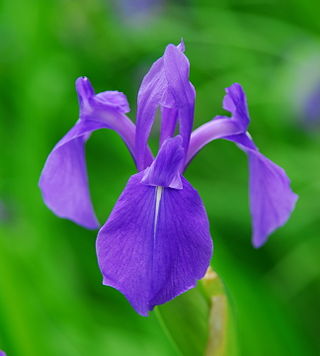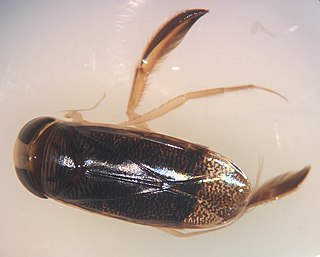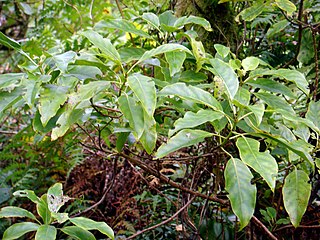
Amorpha is a genus of plants in the pea family, Fabaceae. All the species are native to North America, from southern Canada, most of the United States (US), and northern Mexico. They are commonly known as false indigo. The name Amorpha means "deformed" or "without form" in Greek and was given because flowers of this genus only have one petal, unlike the usual "pea-shaped" flowers of the Faboideae subfamily. Amorpha is missing the wing and keel petals.

Crataegus laevigata, known as the Midland hawthorn, English hawthorn, woodland hawthorn, or mayflower, is a species of hawthorn native to western and central Europe, from Great Britain and Spain, east to Romania and Ukraine. The species name is sometimes spelt C. levigata, but the original orthography is C. lævigata.

Celtis laevigata is a medium-sized tree native to North America. Common names include sugarberry, southern hackberry, or in the southern U.S. sugar hackberry or just hackberry.

Banksia ser. Cyrtostylis is a taxonomic series within the plant genus Banksia. First published at sectional rank by George Bentham in 1870, it was demoted to a series by Alex George in 1981. The name has had three circumscriptions.

Banksia laevigata subsp. laevigata, the tennis ball banksia, is a subspecies of small woody shrub in the plant genus Banksia. It occurs in Western Australia's semi-arid shrubland. It and the closely related B. laevigata subsp. fuscolutea are the two subspecies of the species Banksia laevigata.

Haliotis laevigata, common name the smooth Australian abalone or greenlip abalone or whitened ear shell, is a species of sea snail, a marine gastropod mollusk in the family Haliotidae, the abalones.

Iris laevigata, known as Japanese iris, rabbit-ear iris, or shallow-flowered iris, is a species of flowering plant in the family Iridaceae, native to Japan. It is related to other members of Iris subgenus Limniris, including other species of Japanese irises.

Borodinia laevigata is a species of flowering plant in the mustard family known by the common name smooth rockcress. It is native to many areas of the eastern United States and Canada, where it grows in calcareous rocky woods and bluffs. It is moderately common throughout its range, although it is absent from the southeastern coastal plain and the far north.

Aureolaria levigata, commonly known as entireleaf yellow false foxglove or Appalachian oak-leech, is a species of flowering plant in the family Orobanchaceae. It is native to much of the Appalachian Mountains and surrounding areas in the eastern United States. It is also found in a disjunct population in southwestern Mississippi.

Corixinae is a subfamily of aquatic bugs in the family Corixidae. There are at least 130 described species in Corixinae.

Chrysobothris shawnee is a species of metallic wood-boring beetle in the family Buprestidae. It is found in North America.

Hesperocorixa is a genus of water boatmen in the family Corixidae. There are more than 20 described species in Hesperocorixa.

Hesperocorixa interrupta is a species of water boatman in the family Corixidae. It is found in North America.
Hesperocorixa lobata is a species of water boatman in the family Corixidae. It is found in North America.
Hesperocorixa obliqua is a species of water boatman in the family Corixidae. It is found in North America.
Idolia is a genus of clown beetles in the family Histeridae. There are about six described species in Idolia.
Hesperocorixa atopodonta is a species of water boatman in the family Corixidae. It is found in North America.

Androsace laevigata, synonym Douglasia laevigata, known as the cliff dwarf primrose, is a species of flowering plant in the primrose family, Primulaceae. It is native to the central Pacific coastal mountains of North America below 2,400 metres (8,000 ft) elevation. Its habitat includes cliffs, rocks, and alpine.

Coprosma laevigata, the Rarotongan coprosma, is a herbaceous plant, a member of the Rubiaceae family.














